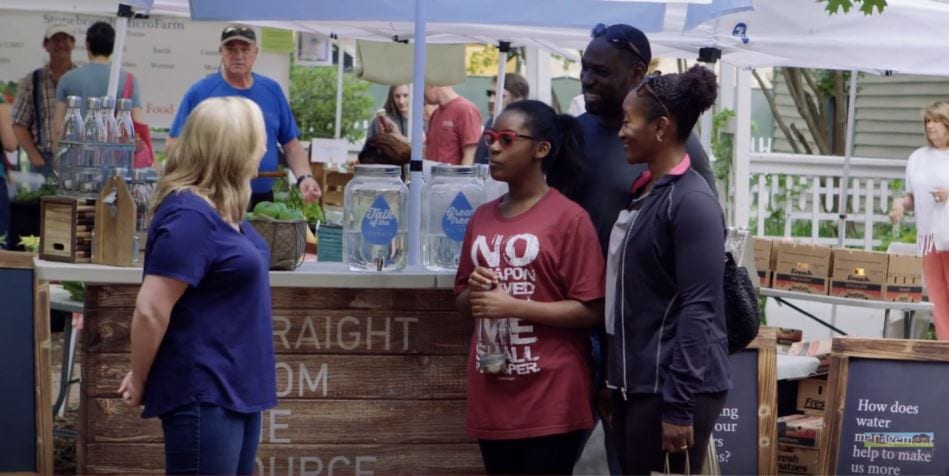Water is on my mind constantly. I think about the streams and creeks that run through my community and carry water to our lakes and rivers nearby. After all, my kids use it to brush their teeth, drink from a sippy-cup and swim in the pool at the home of my in-laws just down the road. As a farmer, I care very much that me and my husband, Chad, put the right practices in place to protect that same water for our little family…and all of the families around us.
Typically our non-farming neighbors and friends ask me about the crops that we raise each year and about the latest weather. But recently I went to a farmer’s market about 20 miles south of our farm and had a very different conversation.
I spent the morning talking to people in our larger community about what we do on our farm to protect our local water. Folks were pleasantly surprised to hear what I had to share, and especially that these types of practices are common for U.S. farmers. Below is a summary.
Soil is for Fields, Not for Waterways
Farmers protect local streams and lakes by preventing their soil from moving off of their fields and into waterways. Depending on the field and how water moves through it, we have a number of practices that we’ve found to be effective. Keep in mind we’re always trying new things. What works for one field may not be the best for another.
- Creating buffer strips – We have areas with grasses, shrubs and trees at the edges of our fields. The root systems of these buffer strips keep our soil in place and help to filter nutrients and protectants so they don’t make it to our waterways.
- Adopting conservation tillage – Farmers have tilled soil for ages. Tilling is simply digging, stirring and overturning the soil to prepare it for planting. We have chosen to reduce our tillage significantly, and in some fields we’ve totally eliminated it. This allows for more organic matter to build up in our soil, which also slows water speed and reduces soil erosion and runoff.
- Planting cover crops – In order to protect the soil in our fields that are left exposed after the growing season, we have started planting cover crops as a barrier. Cover crops also create more healthy root systems that reach down further and access moisture found deeper in the soil. Because we do not irrigate, this is an important benefit. Additionally, cover crops hold our soil in place during heavy rains.
- Terracing fields – Our farm includes several fields located next to some creek beds. We’ve found that creating terraces are an effective way to direct the movement of excess water to prevent surface runoff and soil erosion. Terraces are simply a series of successively receding slopes.
The Right Amount at the Right Time
We’re also very careful to protect our crops against weeds and insects by using the right amount of crop protection products at the right time. Here’s how we do that:
- Scouting – Chad scouts our fields to narrow in on specific locations suffering from weed or insect pressure. Then he creates a schedule for those particular areas to get what they need when they need it. So instead of spraying an entire field, we can get really specific. But scouting is dependent on having the right equipment, which leads me to what farmers call “precision technology.”
- Precision technology – We have amazing farm equipment with new technologies. These technologies allow us to apply crop protection products in those specific locations. And also with just the right amount of protection. We can control it down to the droplet size. And we’re also very careful to spray during the right weather. In addition, we carefully select crop protection options that are designed to stay on the plant and out of streams and waterways.
These are just a few examples of what we’re doing on our farm in Tom Bean, Texas to protect our water. Our practices constantly change as we learn new things. What works for a neighboring farmer may or may not be the best practice for us because each field is unique and requires a different approach from the next. Two things will likely stay the same for us in five years. We’ll still be trying new things. And I’ll still be thinking a lot about water and what we can do to help make sure it is safe.
